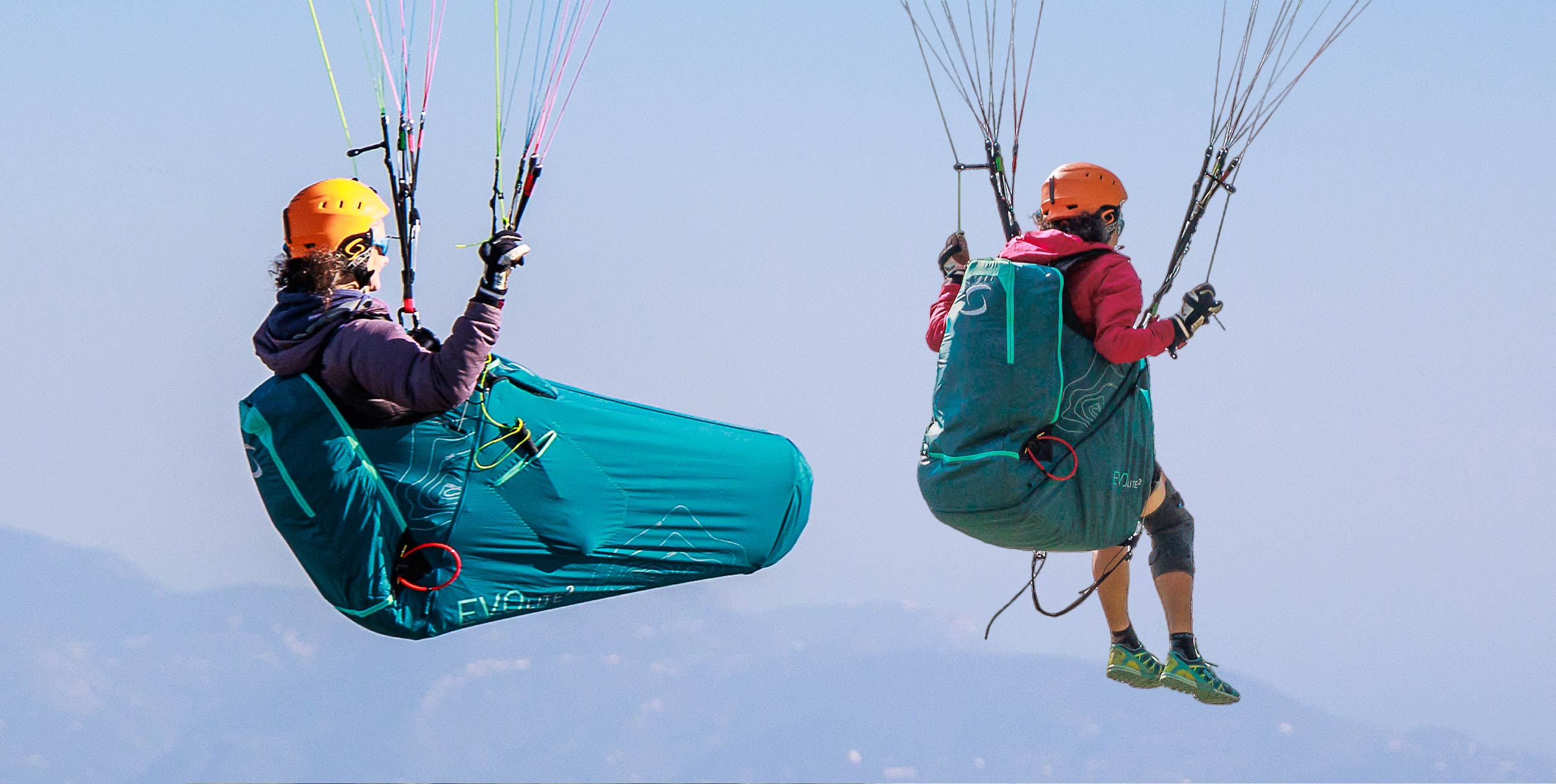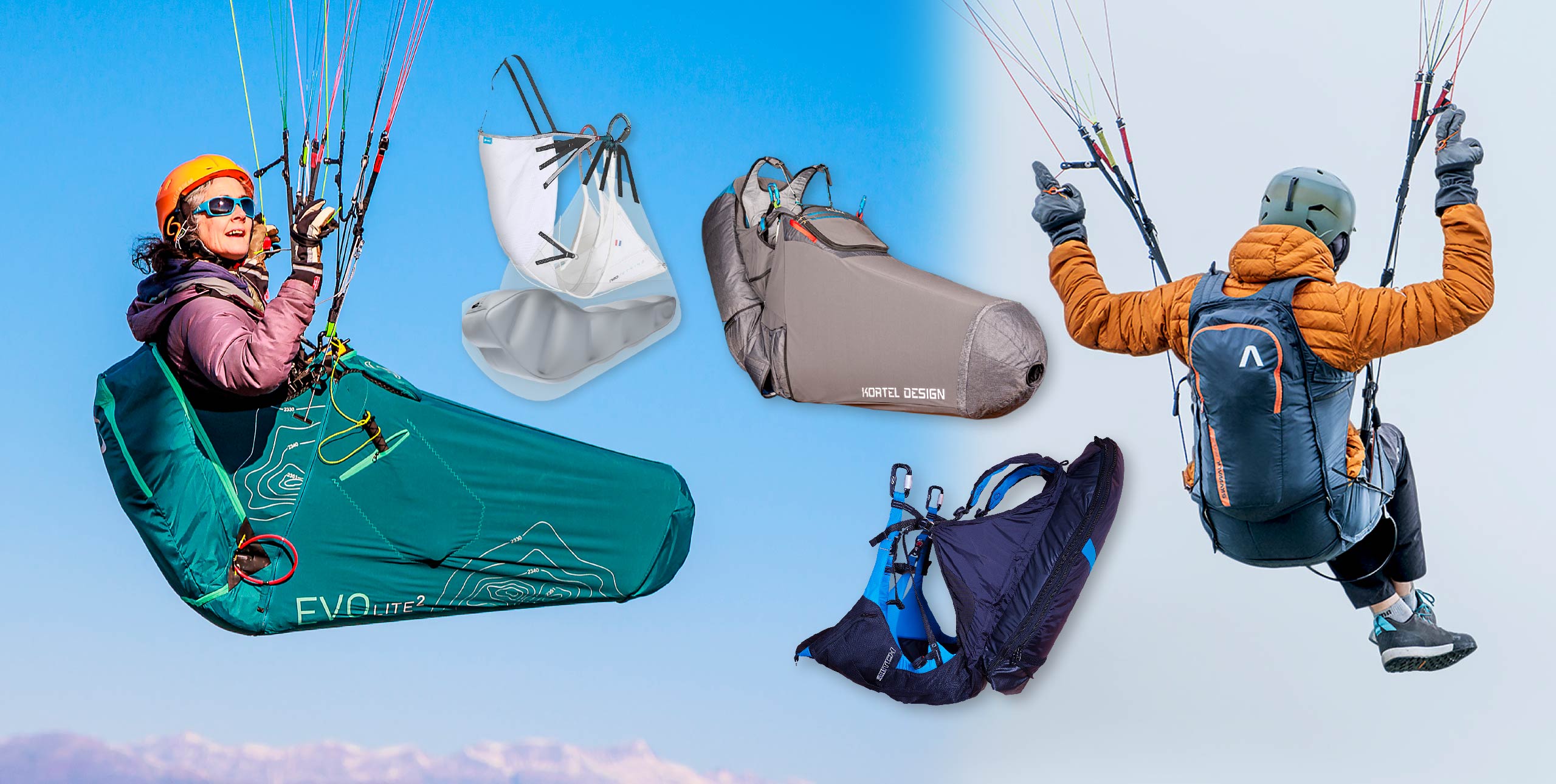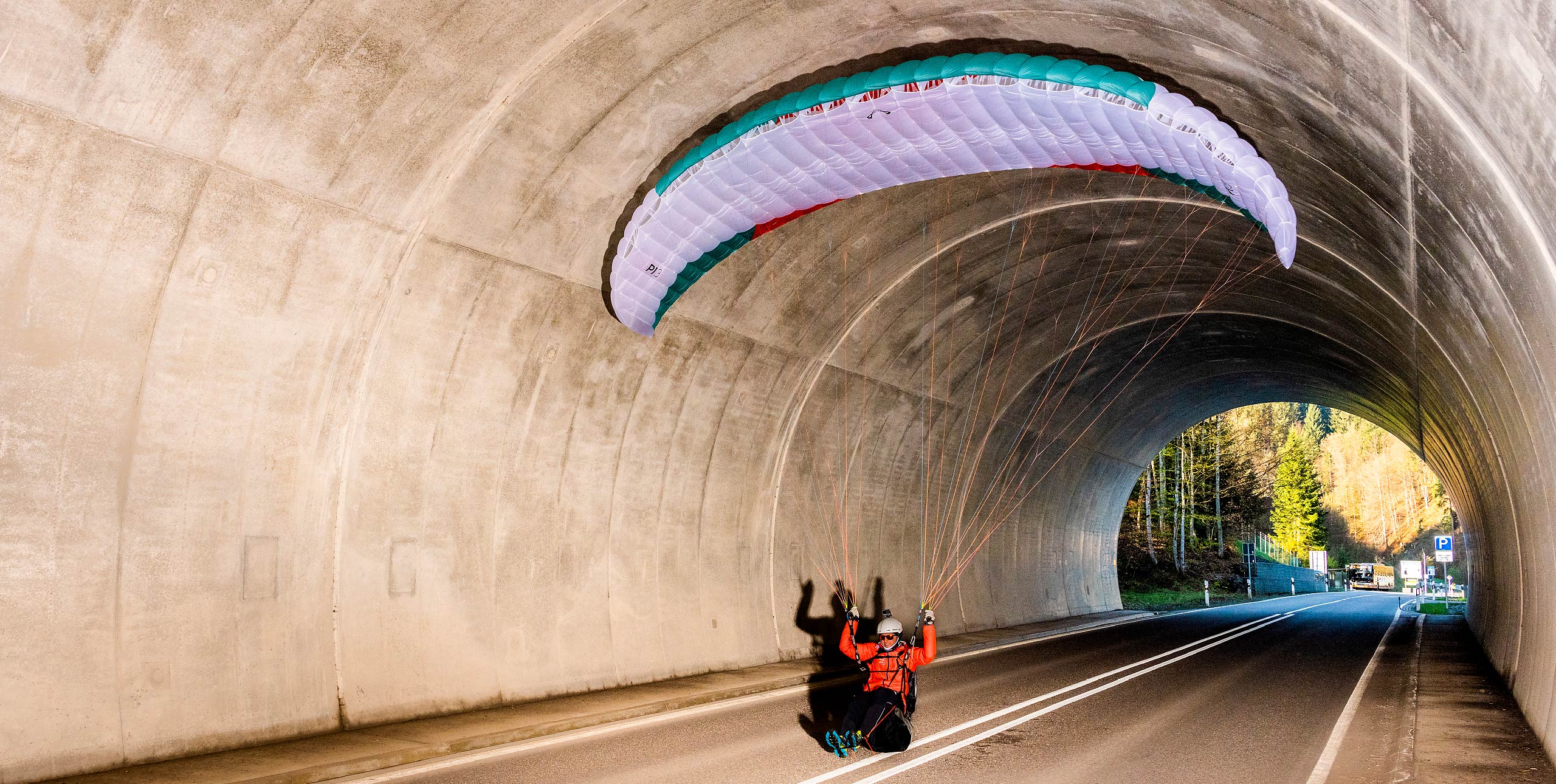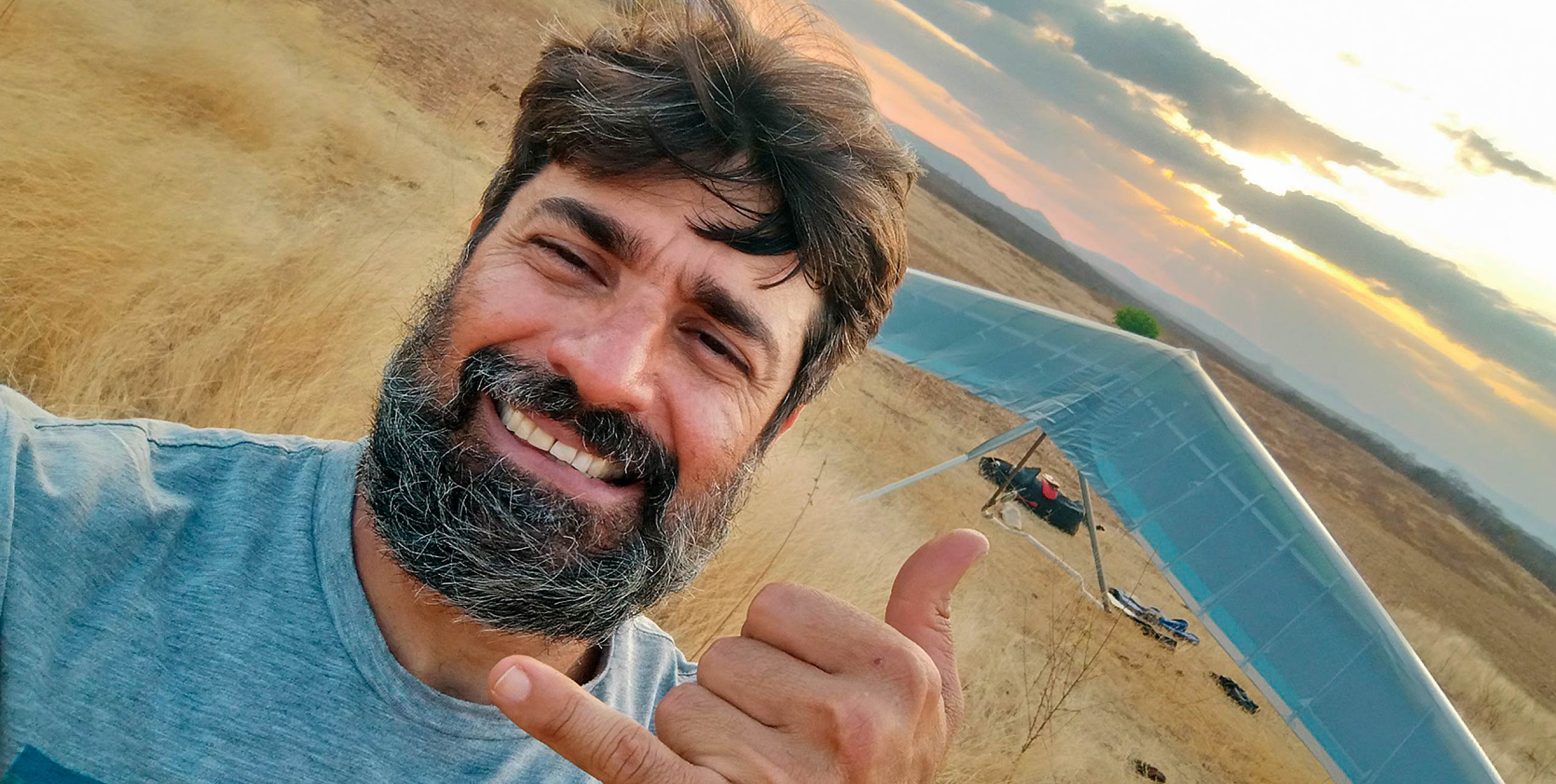
Erwin Voogt flies this high-spec lightweight pod designed for high-performance flying
Since its introduction at the 2017 Red Bull X-Alps, Skywalk’s lightweight harness the Range X-Alps2 has proved popular. In 2017, 10 of the 32 X-Alps pilots used Skywalk’s groundbreaking harness – and even during the 2021 edition it was the harness of choice for several athletes. But time moves on and today most manufacturers have a harness in their line-up with similar characteristics: lightweight ripstop fabric and a DIY inflatable airbag for protection.
Last year’s Red Bull X-Alps saw the introduction of the next iteration of the Range X-Alps harness, which was released in a consumer version shortly afterwards. We had the opportunity to fly it for a few weeks last season and compare it with the previous model.

Design and construction
The Range X-Alps 3 is delivered with the same type of bag as the “2”, only the inflation tube is different. The original one was a simple tube and actually I always inflate my own Range X-Alps 2 by blowing it up with my mouth instead of using the bag, because it is less hassle. But the new version – Skywalk calls it Permair 2.0 – has an air valve that works great. In just two strokes the protector can be inflated quickly with the bag. No need for an electric pump (which is available as an option)!
Contrary to the somewhat spartan look of its predecessor, the Range X-Alps 3 looks shiny and more sophisticated. The seat has a thin padding, the straps have been redesigned, there are more pockets and zippers. All this without too much weight increase, about 250 grams. At my length, 183cm, I could fly the M instead of the L because the new version fits a little larger than the old one. So, for me there was hardly any difference in weight.
Instead of a seat board or hammock, the Range X-Alps 3 has a ‘power frame’ made of nitinol wires. Its predecessor had a similar construction but made with steel wires. Furthermore, the way the wires are incorporated has been improved. With the old version the wires could slip out of their pockets, but that issue has now been resolved.
There is only one container for the reserve, at the front. The volume is 4.3 litres for all sizes of harness. So the obvious choice for a hike-and-fly set-up is probably the only choice: a lightweight reserve parachute. A steerable reserve parachute is possible, so long as it is small enough to fit in the maximum volume of the container.

Ready for take-off
Setting up the pod is straightforward, as is getting in the harness. Adjusting the lumbar and leg support, the tilt of the seat, length of the cocoon and speed system can be easily done through knotted lines.
The steps for getting in are indicated with numbers and letters, but the order of the steps is quite logical. First close the get-up leg straps. Then close the upper inner part of the cocoon by leading a little ball through a loop, and finally pull a metal hook through another loop. That’s it. There is also a loop around your ankle to make it easier to get into the cocoon after launch.
The new nylon stretch fabric of the cocoon combined with the metal closing hook makes the cocoon taut and less flappy than the cocoon of the previous Range X-Alps.
Just like its predecessor, the Range X-Alps3 flies comfortably and gives good feedback from the wing. If you like the “2”, you will also like the “3”; the flying is the same.
The power frame makes the harness comfortable to fly on long flights. It provides a character that is a cross between a seat plate and a hammock. Steering on weightshift goes well, but not the same as with a seat plate. The harness is already quite stable, but you can add a ‘stabiliser’ – a short line on each side that can be connected to the webbing. I didn’t use it, however. I flew the Range X-Alps 3 mainly with the Skywalk Mint, the new two-line EN-C, and I was perfectly happy with the standard set-up.
Of course, the Range X-Alps is primarily designed as a lightweight hike-and-fly harness. It is not the twin-reserve, majestic throne now common at competitions. Actually, there’s no option for a, at competitions, mandatory second reserve. Also the space for instruments is somewhat limited. But even though it is a lightweight construction, I found the Range X-Alps comfortable to fly for multiple hours.
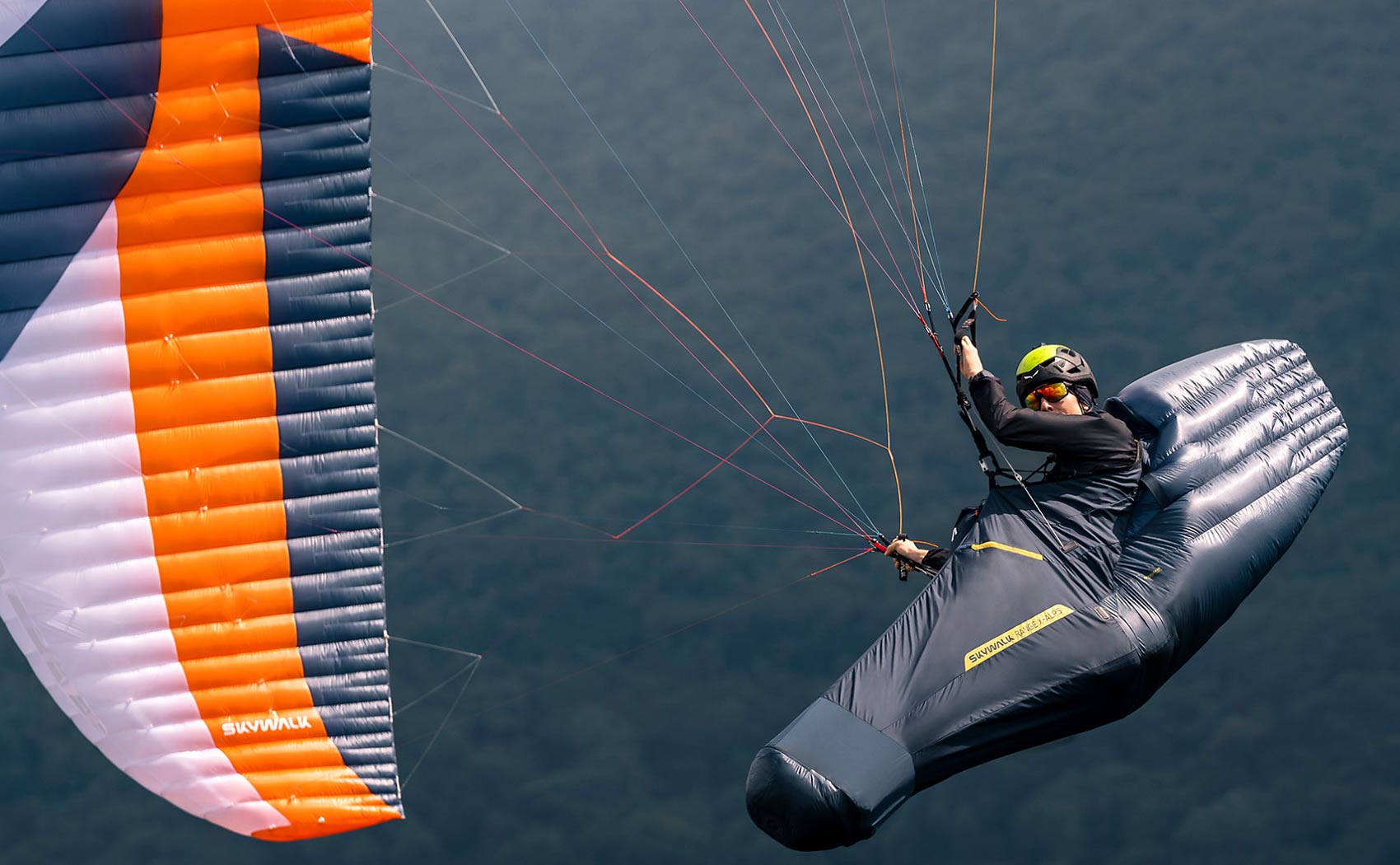
The verdict
As a lightweight hike-and-fly harness, the new Range X-Alps 3 is even closer to perfect than its predecessor. Maybe some purists could complain about the small weight gain, but most pilots will welcome the evolutionary improvements and better looks. The trademark features are still there and often a little better: clever lightweight but surprisingly durable construction, small packing volume, very easy to set up and get in, lots of storage space and pockets, great protection. The new air valve is a big improvement – squeeze the inflation bag twice and you’re ready to go.
There is more competition now, but anyone looking for a lightweight pod harness should still have look a at the Skywalk Range X-Alps 3.
Manufacturer’s Specifications
Skywalk say: “The Range X-Alps3 was designed primarily for weight-optimised XC pilots who prefer compact equipment”
Pilot level: Advanced
Sizes: S, M, L
Pilot height (cm): 160-176, 173-184, 183-200
Weight (kg): 1.95, 2.05, 2.1
Certification: EN and LTF
skywalk.info
Erwin Voogt is 183cm tall and flew the M size, mainly with the Skywalk Mint (EN C)
Published in issue 246 (December 2023)


